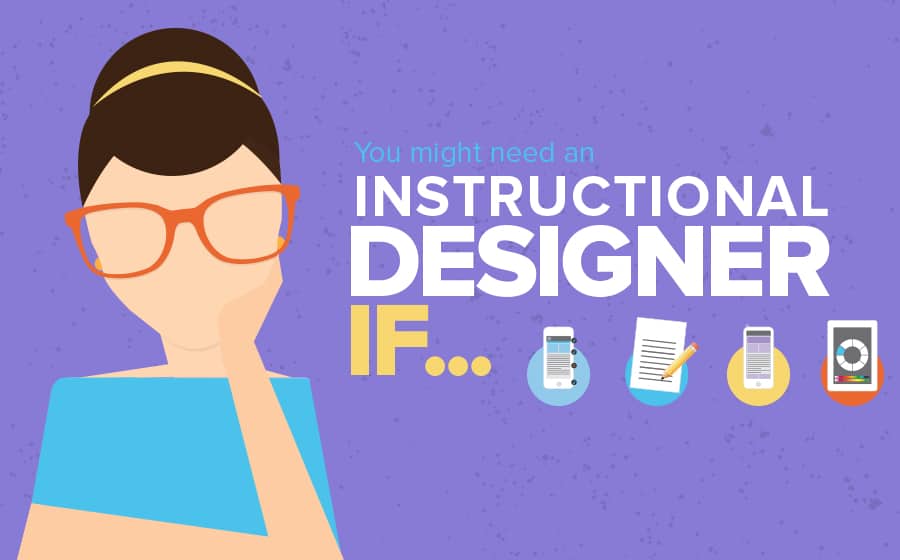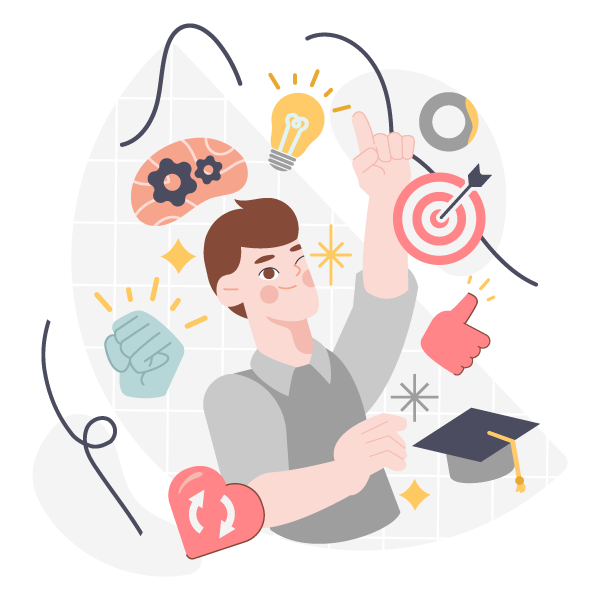Gone are the days of evergreen training manuals! Nowadays, technological advancements leave eLearning programs in the dust in no time. And that’s why today we’re talking about why you should hire an instructional designer.
Instructional designers keep a constant eye on how online education evolves. They keep up with technological innovation and adjust eLearning programs accordingly so they appeal to your learners.
But there’s more to how an instructional designer can help you in this endeavor. Check it out below.
What is an instructional designer?
Designing training courses or programs is not a matter of revising training materials. Entire online learning strategies often call for a revision too. And that’s what the instructional designer takes care of for you!
They make sure your learners absorb, retain, and recall your training program. And they not only design from scratch or redesign course content but also online learning strategies.
Additionally, they develop entire eLearning curricula for your company. This means they’re experts at recommending the right courses and their structure, content, activities, assessments, training methods, and course platforms to achieve your learning outcomes and, ultimately, your business goals.
When you hire an instructional designer, you welcome on board an expert on adult learning theory. However, instructional designers are also practitioners! They put the theory into practice and create the curricula perfect for your unique organization.
The goal of an instructional designer is to maximize learning effectiveness. Therefore, they base their work on proven instructional theories and models. For instance, they might apply the SAM model to design learning experiences that allow your staff to build new skills and knowledge.
If we were to define the job of an instructional designer, this would be it: they design engaging learning experiences that lead an audience to achieve the desired learning outcomes.
Plus, there’s a great deal of creativity and interdisciplinarity in what instructional designers do. They know, combine, and apply psychology, sociology, and education principles. And we described the way they do it below.
What does the instructional design process look like?
To begin the instructional design process, an instructional designer assesses learning needs. That’s the underlying reason why someone ordered a course. A new business goal, a new system or process that’s going to be put in place, or a team or department that’s underperforming might motivate a company to hire an instructional designer.
Nevertheless, the instructional designer must understand what your employees need to learn to tackle those challenges efficiently. In other words, the instructional designer will need to figure out:
- What your staff members already know and can do
- What they should know and be able to do after they take the training course or program
According to ATD’s Talent Development Capability Model, the instructional design process consists of the following:
- Assessing learning needs—to promote a transformation in employees’ skills, knowledge, and behavior
- Defining a process—with the learning strategies and technologies most suited to your training needs, organization, and people
- Creating training materials—presentations, lesson notes, workbooks, checklists, guides, handouts, or job aids
- Putting together learning activities and assessments—quizzes, group projects, or individual assignments
- Evaluating training effectiveness—with post-training surveys to evaluate what your employees learned throughout the course or program and whether their performance or attitude at work improved
Now, you know what an instructional designer does. Therefore, you already know some strong reasons to hire instructional designers, but there are more.
Why should you hire an instructional designer?
A small budget for training might trick you into creating your own training courses or programs. Or someone who took a quick instructional design course might lead you to rely on those in-house resources. However, creating effective learning experiences in those ways might prove counterproductive.
Okay, it might work for optional or less strategic training. But it might not work as well for mandatory and highly strategic courses or programs. So, how do you know when you need to call in the pros?
Check your problems against the list below. If they match any of the list items, it’s time to hire an instructional designer.
1. An overwhelming amount of content
Sometimes, materials are so extensive that it takes your staff much more time to complete training than you wish it did. In those cases, an instructional designer can help you condense the materials without losing effectiveness. They can even help preserve the learning outcomes!
Instructional designers know where to cut content, activities, or assessments while keeping the course or program useful. It might be a matter of:
- Rearranging the content’s structure
- Using different content types
- Switching the training methods
2. Too many time-consuming live classes
Do you feel that your live or virtual instructor-led training (VILT) sessions are taking too much of your time? No problem!
An instructional designer can help you convert those sessions into one of the following solutions:
- An eLearning module, unit, or lesson that your employees can take online at their convenience
- A prerecorded VILT session that you record once and your employees watch time and again
3. The need for a brand new training program
Building a training program from the ground up might be a hard endeavor for you. But it’s not for an instructional designer!
It takes expert planning and execution, and instructional designers are trained to do it flawlessly. So, why not count on them to do the job?
Hire an instructional designer to do the following for you:
- Define learning outcomes
- Choose the right training method and delivery platform
- Create the training content and activities
- Select the assessment methods and create the assessments
4. Low completion rates
If your staff starts training modules but doesn’t complete them, sirens should sound! Your employees are disengaging from training somewhere for some reason. An instructional designer might help you uncover what went wrong and when, and then correct that.
5. Learning outcomes aren’t being met
When your staff doesn’t improve their performance or behavior at work after completing your training program, you have a problem. They didn’t reach the program’s learning outcomes.
The essential goal of any training program is to build specific skills and knowledge and transform certain attitudes of learners. When it doesn’t, the program wastes learners’ time and effort while wasting your company’s resources. To avoid that, hire instructional designers.
6. Lack of executive buy-in
A training department or project requires the support of the C-suite to become a success. Nevertheless, getting the executives on board is a struggle for many training managers.
Guess what? An instructional designer can help you come up with a proposal that gets your directors excited. And in turn, you’ll inspire your employees too.
7. Low level of interest in courses
Your staff should feel compelled to open your courses, inspect them, and experience engaging learning experiences. We haven’t talked about this so far, but an instructional designer can leverage your training program marketing.
Hiring an instructional designer might raise the interest of your workforce in taking your courses. And if your courses reveal their effectiveness, the word will spread, and more employees will become excited to learn.
How to find an instructional designer
Allocating a budget to hire an instructional designer can be a daunting step, but it pays off. It boosts the effectiveness of your training, thus giving you the outcomes you seek. In turn, you can channel your time and effort to your core business activities.
No more boring, superfluous, or lengthy training! All you have to do is hire an instructional designer, and we can help you with that. We can outsource one of our talented instructional designers or develop your project from start to finish. Let’s chat about what you’re looking for today.






